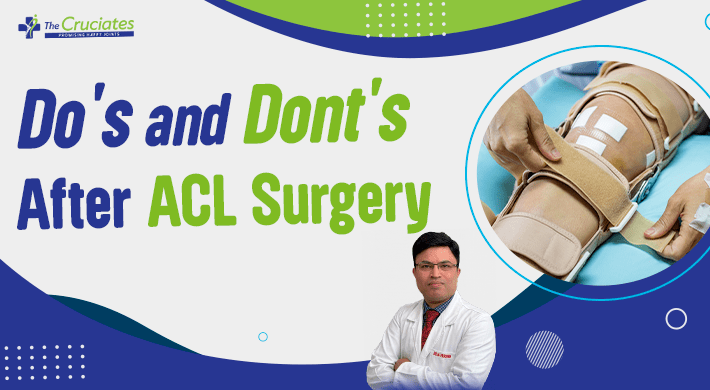[rank_math_breadcrumb]
ACL reconstruction surgery is one of the most common surgeries performed in India, and it can be very effective in alleviating pain and stiffness associated with ACL injury. However, there are some critical things that need to be done, and some important things that shouldn’t be done after ACL surgery in order to get back on your feet faster and healthier than ever before!
Table of Contents
Here's what you need to know about these do's and don'ts After ACL Surgery
1) wearing knee brace first few weeks after ACL surgery
2) Parents should avoid too much pampering of children
3) Give adequate time to physiotherapy
Daily minimum of 1-2 hours physiotherapy for at least 3 months required, otherwise knee stiffness and poor recovery can occur. The patient may develop fixed flexion deformity which can alter normal gait; in this situation, the goal is to restore knee extension with additional assistance to compensate for non-active quadriceps muscle atrophy. For many patients it will take many months before they achieve complete restoration of knee function.
4) Following wrong physiotherapy protocols
Physiotherapy is necessary to accelerate post ACL surgery recovery. Some people follow their own physiotherapy protocols without proper consultation. Remember, this can adversely affect your post-surgical recovery. Make sure you take advice from a qualified physiotherapist about correct protocol for exercises and ensure you do them daily to have the best results.
5) Early return to sports
Following recovery from ACL injury, an athlete should be given a return to sports fitness test before their professional sports league. If you feel that you are not fully healed yet, then speak with your doctor about it first before proceeding with returning to sports. Otherwise, it can adversely affect your Sports career. You should return to sports only after clearing your fitness test.
Recommended Read :- Best Ligament Surgeon For Sports Injury?
6) Early mobilization
Multiligament tears need more rest. The early mobilization should not be done as it can result in failure of the surgery. When more than one ligament is injured, as in an ACL tear with a simultaneous meniscus injury, the period for rest needs to be increased. Always It is important to stay within the parameters advised by your sports injury surgeon for best results, so if they say that five minutes a day is enough, then stick with five minutes per day. Better to stick to the protocols advised by your surgeon for best results
7) Delay in starting Physiotherapy
Physiotherapy is typically started the first day after surgery. The sooner you start, the more likely your post ACL surgery recovery will be a success. Delay can result in knee stiffness, which can lead to decreased range of motion, pain, and even re-injury. For best results follow the advice given by your surgeon.
8) Inadequate diet
9) Avoid Open Chain Exercises
10) Always be in touch with your ACL surgeon and Physiotherapist until complete recovery
Also Read: A Guide for ACL Injury Patients

